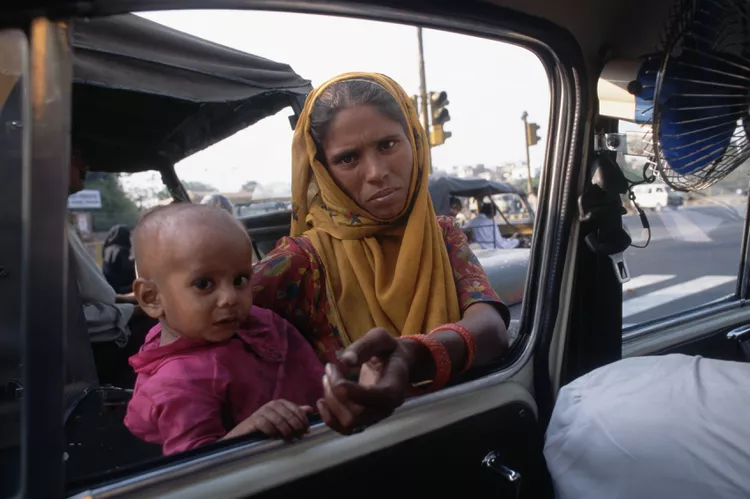Summary
Despite India’s rapid economic growth in recent years, poverty and begging are still among the biggest issues in India. For a foreign tourist who’s not accustomed to facing such widespread poverty, it can be confronting and challenging to resist giving money. However, the reality is that it’s likely you’re not truly helping.
Important Things to Know
It’s estimated that there are around 500,000 beggars in India — which translates to half a million people! Despite this staggering figure, begging is considered a crime in most states in India.
Why are so many people resorting to begging? Aren’t there organizations that provide aid? Sadly, the issue is more complex than it initially appears.
Beggars can generally be divided into two categories: those who have no choice and are compelled to beg, and those who have mastered the art of begging and earn substantial sums from it.
While poverty is indeed a significant issue, begging often operates within organized gangs. For the privilege of appealing for help in specific areas, each beggar must hand over a portion of their earnings to the gang leader, who keeps a substantial share. Additionally, some beggars may even maim themselves to invoke sympathy and obtain more money.
Furthermore, many children are abducted in India and coerced into begging. Alarming statistics from the Indian National Human Rights Commission reveal that up to 40,000 children are kidnapped annually, with more than 10,000 remaining unaccounted for. It’s estimated that 300,000 children across India are drugged, abused, and forced to beg every single day, all part of a multi-million dollar enterprise controlled by human trafficking networks. Police often fail to intervene, mistakenly assuming that the children are with family members. Additionally, legal inconsistencies hinder effective policing efforts regarding child beggars, particularly since many of them are too young to face punishment.
Various welfare initiatives in India have aimed to diminish begging by offering jobs, with differing degrees of success. Unfortunately, many beggars have become so accustomed to this lifestyle that they prefer it to working. Furthermore, some earn more through begging than they would in legitimate employment.
Where Is Begging Most Likely to be Encountered?
Begging is most commonly observed in areas frequented by tourists. This includes major landmarks, railway stations, religious sites, and shopping districts. In larger cities, beggars can often be seen at significant traffic intersections, approaching vehicles when the lights are red.
Certain states in India have a higher concentration of beggars than others. According to the census data from 2011, West Bengal and Uttar Pradesh report the highest figures. Child begging is particularly rampant in Uttar Pradesh, whereas West Bengal has an increased number of beggars with disabilities. Other states also reporting significant numbers include Andhra Pradesh, Bihar, Madhya Pradesh, Rajasthan, Maharashtra, Assam, and Odisha. However, due to the challenges in accurately identifying beggars, data reliability is often questionable.
Common Scams to Watch out For
In Mumbai, visitors are frequently approached by a child or woman requesting powdered milk to feed a baby, leading them to a nearby store that conveniently sells overpriced supplies. If you purchase the milk, the shopkeeper and the beggar may simply split the profit.
Moreover, it’s common for beggars to rent babies from their mothers to enhance their credibility. These infants, often sedated, appear lifelessly in the arms of the beggars while they plead for assistance.
How to Best Deal With Begging
Beggars in India come in various forms and often employ diverse tactics to evoke sympathy. Tourists should carefully consider how to respond to begging situations. Unfortunately, many foreigners feel compelled to give something to assist them. Given the persistence of some beggars, this can lead tourists to give out money, but is that the right approach?
One perspective from an Indian individual advised against giving any rupees to beggars. Although this may sound harsh, when beggars receive money easily, many opt out of seeking work and this leads to an increase in the number of beggars.
While it may seem heartless, the most effective approach is usually to ignore beggars in India. The sheer number means that, even if you’re willing to help some, it’s impossible to assist everyone. Additionally, giving money to one beggar often leads to a crowd of others gathering. Importantly, as a foreign visitor, you are not responsible for resolving India’s social issues, nor do Indian citizens expect you to do so.
It’s also crucial to recognize that beggars can be highly deceptive, including the children. While they may present as friendly and pleading, they could easily be communicating harshly in their native language.
Tips for Giving
If you genuinely wish to help, consider giving only 10-20 rupees at a time. It’s advisable to offer assistance only when leaving a location rather than arriving, to avoid being surrounded. Aim to give to individuals who are elderly or visibly disabled, and steer clear of women with babies, as those infants often do not belong to them.
For additional information, click here for insights on recognizing fake Indian currency.




